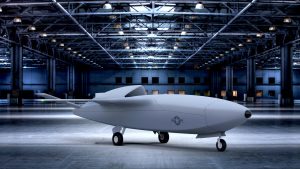The use of Artificial intelligence (AI) in aviation thus far has been Earthbound, using machine learning to see trends and spot anomalies in vast amounts of data downlinked from aircraft and engines. But deployment of the technology is rapidly accelerating in all areas, from machine vision for autonomous detect-and-avoid systems and reading airport signs during automated taxiing to speech recognition for digital air traffic control and even algorithms for automating dogfight maneuvers.
On the cutting edge of civil aviation, companies like Daedalean AG, a Swiss startup, which are developing aircraft-agnostic, autonomous flight control software that relies on various forms of AI, including computer vision, machine learning and neural networks. “Our goal is to make it possible to fly without relying on human pilots,” said software engineer Luud van Dijk, cofounder and CEO.

On the military side, there’s Skyborg, a U.S. Air Force Research Laboratory program to field a family of robotic air vehicles by 2023. Relying heavily on AI, Skyborg is being designed to work with piloted aircraft in heavily contested environments.
One of the most common questions about AI is when will pilots no longer be needed to fly commercial airplanes?
The answer is decades from now. However, the groundwork is being laid now for such an eventuality, and autonomous jetliners already are becoming feasible, according to Pete Kunz, said Boeing’s senior chief engineer for unpiloted systems. Major technical hurdles exist, including training the AI that flies an aircraft to handle contingencies, and building systems and developing the software to enable pilotless airplanes to communicate with airports and other aircraft.
Intelligent logistics is another area where AI will have a major impact. Boeing has collected millions of hours of flight data on air speed, air flow, fluid levels, valve positions, pressure levels and other aircraft-performance parameters. The idea is to use machine learning—a subset of AI involving the study of algorithms that improve automatically through experience—to determine patterns in the data to spot anomalies. Maintenance staff would get alerts so they can schedule inspections and repairs, reducing unplanned maintenance. Ultimately, the system could be integrated with schedules for repair crews and supply chains for parts.
An example of AI in practice today is Delta Air Lines’ initiative to utilize AI to analyze millions of data points—aircraft

locations, passenger volumes and airport conditions—to create scenarios that can be used to make better decisions on future and even hypothetical flight operations.
There are multiple research and development initiatives around the world focused on how AI could be applied to aviation. All the same, AI unquestionably will have a profound impact on all of aviation. EASA released a road map for AI. For its part, Eurocontrol, the central organization for coordinating and planning all air traffic control across Europe, has published an action plan to accelerate development of AI in aviation and air traffic management (ATM). EASA plans to update its document annually to address manufacturers’ questions on how to certify AI-based systems. Fundamental to EASA’s vision is the concept of trustworthiness, whose building blocks include learning assurance, explainability and safety-risk mitigation. Explainable AI needs further investigation, according to the EASA document, because machine-learning behaviors cannot be validated using conventional approaches due to their lack of predictability.
The first edition of the report, titled “Fly AI,” pools the expertise of a wide range of leaders from all aviation sectors, including airlines, airports, air navigation service providers, manufacturers, governments, and the military. “With aviation facing growing pressure to reduce its environmental impact, as well as persistent [pre-Covid] capacity bottlenecks, we need more sophisticated changes on the ground and in the air, and quickly of we want to accommodate sustainable traffic and passenger growth long term,” said Adina Valean, European Commissioner for Transport. “Artificial Intelligence can be a key ally in pursuit of this goal.”
Editor: Learn more about new frontiers in aerospace and defense here.